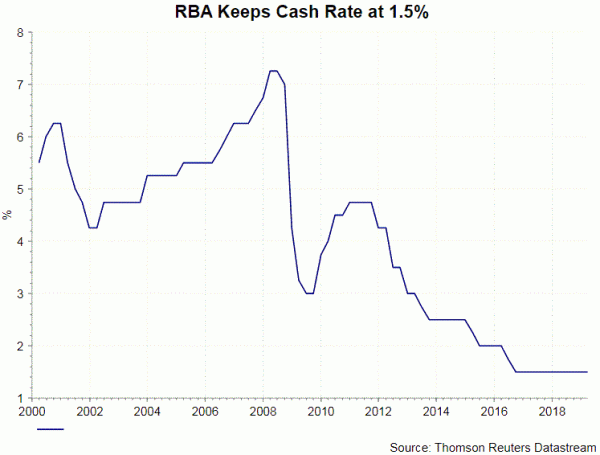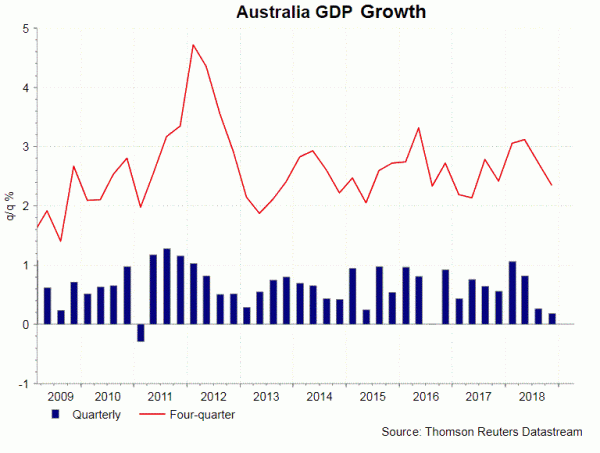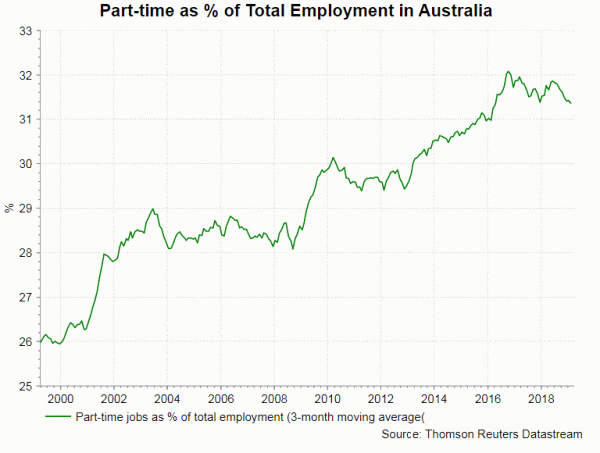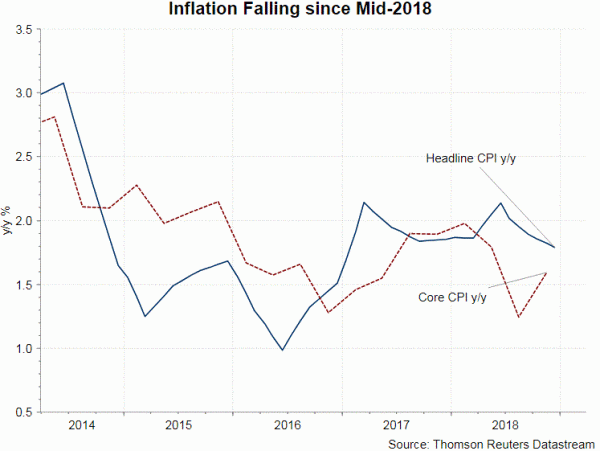The lack of momentum in economic activities would soon dent RBA’s hope of higher household consumption (and eventually higher inflation), as a result of further decline in the unemployment rate. We expect the central bank to turn more cautious at next week’s meeting. Although the members agreed in March that there’s no strong case for near-term move in rates, they will soon acknowledge the need to shift from the “neutral” stance to a more “dovish” one.
Australia’s GDP expanded +0.2% q/q in 4Q18, missing consensus of, and prior quarter’s +0.3%. Household consumption grew +0.8% q/q while business investment contracted -1% during the period. Growth of +%2.3% for the full year of 2018 is below RBA forecast. Worse still, the country has technically entered recession on per capita basis. Per capita GDP contract -0.2% in 4Q18, exacerbating from -0.1% in the prior quarter.
At the minutes for the March meeting, RBA suggested that the job market is a key area it is monitoring. We find that the employment situation has shown signs of fatigue recently. Unemployment rate slipped -0.1 percentage point to 4.9% in February. While this appeared a strong figure, the number payrolls increased only +4.6K, weaker than consensus of +14K and January’s increase of +39.1K. Worse still, full time positions fell -7.3K in February, after gaining +65.4K in the prior month. Although RBA has been denying the rising proportion of part-time jobs in total employment is a problem, historical data in the US shows that a sharp rise in part time jobs usually accompanies with economic recession. Part time jobs use provide less welfare and job security. This could hamper incentive to spend. Indeed, consumer sentiment fell -4.8% in March, after a +4.3% increase a month ago. Meanwhile, softening in housing prices is yet another factor restraining household expenditure.
Markit’s PMI has provided a gloomier insight of the country’s economic developments in the first quarter of this year. The composite index climbed +0.9 point higher to 50 in March, following a decline to the contractionary territory in February. Services activities stayed in contraction for two consecutive months in March, while growth in the manufacturing sector decelerated. As suggested in the report, while the overall business activity “stabilized” in March, following a decline in February, the services sector “continued to fall” while growth in the manufacturing sector “softened”. It also noted that “job creation was the slowest in the 35-month survey”. Meanwhile “relatively weak demand conditions led to softer business sentiment, with confidence around the 12-month outlook the lowest since June 2016”. We expect to see growth in 1Q19, as well as the rest of the year, to moderate.
In March, RBA indicated that “the main domestic uncertainty continues to be the strength of household consumption in the context of weak growth in household income and falling housing prices in some cities”. Yet, the members still judged that further decline in the unemployment rate could lift wage growth, which could in turn boost consumption and inflation. We find this wishful thinking difficult to materialize without more accommodative monetary measures.












